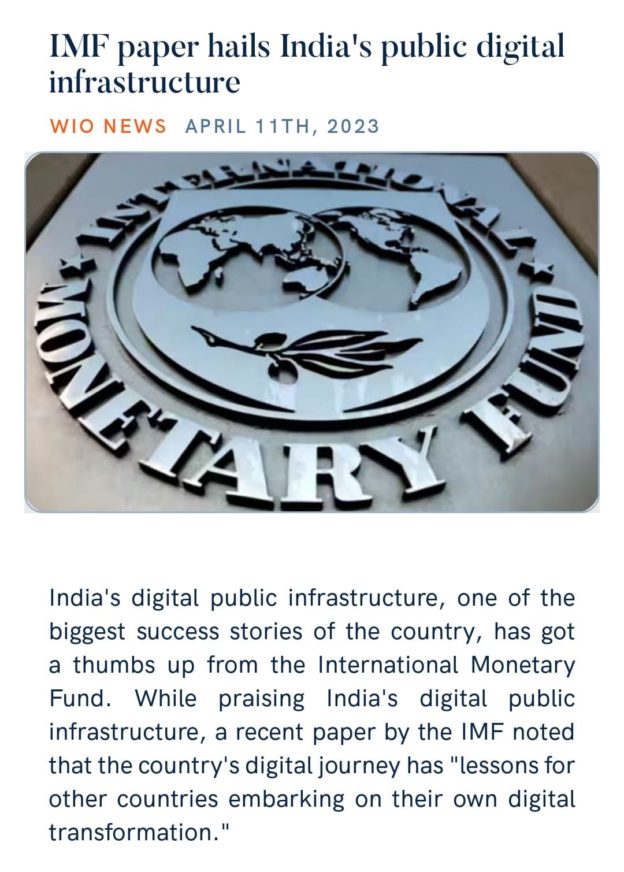India’s digital public infrastructure, one of the biggest success stories of the country, has got a thumbs up from the International Monetary Fund.
While praising India’s digital public infrastructure, a recent paper by the IMF noted that the country’s digital journey has “lessons for other countries embarking on their own digital transformation.”
India’s digital public infrastructure, which includes the Aadhar, Unified Payments Interface (UPI) — in other words, digital payments — and Digilocker (an online storage platform), collectively come under the ‘India Stack’.
Together they enable online, paperless, cashless, and privacy-respecting digital access to a variety of public and private services, the paper noted.
The IMF paper, titled ‘Stacking up the benefits: lessons from India’s digital journey’, argued that India’s digital infrastructure helped the people during the pandemic.
“India was able to quickly provide support to an impressive share of poor households during the pandemic. In the first months of the pandemic about 87 per cent of poor households received at least one benefit,” the paper said.
Thanks to the robust digital infrastructure across India, the Indian government could save an estimated 1.1 per cent of the GDP in expenditure up to March 2021.
ALSO READ | India, China to account for half of global growth in 2023, as IMF chief warns of ‘sharp slowdown’
The paper particularly noted how the government pushed for financial inclusion through the Jan Dhan scheme, which provided low-cost zero-balance accounts to millions of poor Indians by linking their accounts to Aadhar.
Under this initiative, 462.5 million bank accounts were opened in both urban and rural areas, as of August 2022.
In addition, ‘India Stack’ has digitised and simplified Know Your Customer (KYC) procedures, which has lowered costs. Banks that use e-KYC lowered their cost of compliance from $12 to 6 cents, the IMF paper said.
And it is not just the banking and finance sector that has benefited from India’s digital transformation.
India’s digital infrastructure helped overcome logistical challenges during the Covid-19 vaccination process.
“Using a digital backbone allowed India to scale its vaccine delivery quickly and overcome challenges such as large-scale internal migration. The technology underlying CoWIN has been deployed in Indonesia, Philippines, Sri Lanka and Jamaica to help facilitate their vaccination programmes,” the paper noted.
A large part of India’s digital infrastructure is centred around digital payments via UPI.
As UPI is interoperable, which means it can be used across multiple platforms, even private players like PhonePe, Google and PayTm have integrated their payment systems with it.
Digital payments now account for 68 per cent of all payment transactions by volume. Roughly 4.5 million individuals and companies have benefited from easier access to financial services through UPI, the paper noted.
Digitalisation has also supported the formalisation of the Indian economy, where a large section of the population works in the informal sector, the paper added.
https://www.wionews.com/business-economy/imf-paper-hails-indias-public-digital-infrastructure-580962





